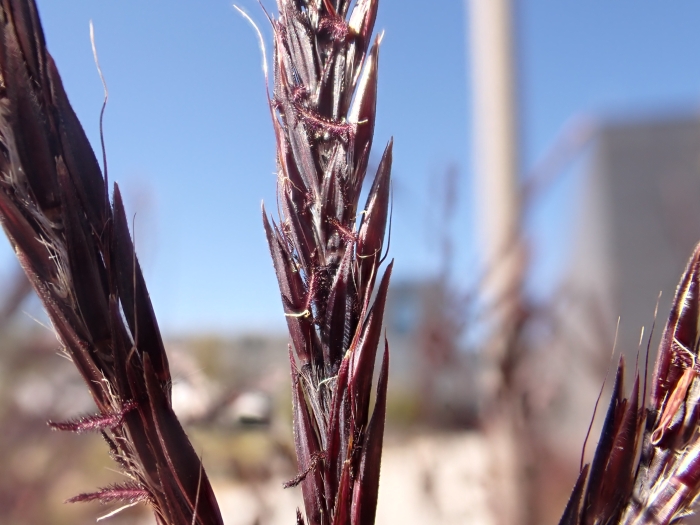Big Bluestem
(Andropogon gerardii)
Big Bluestem (Andropogon gerardii)
/
/

Matt Lavin
CC BY-SA 2.0
Image By:
Matt Lavin
Recorded By:
Copyright:
CC BY-SA 2.0
Copyright Notice:
Photo by: Matt Lavin | License Type: CC BY-SA 2.0 | License URL: https://creativecommons.org/licenses/by-sa/2.0 | Uploader: Ser Amantio di Nicolao | Publisher: Wikimedia Commons | Title: Andropogon_gerardii_-_big_bluestem_-_51500757298.jpg | Notes: Transferred from Flickr via [[Commons:Flickr2Commons|Flickr2Commons]] |













































































Estimated Native Range
Summary
Andropogon gerardii, commonly known as Big Bluestem, is a perennial warm-season bunchgrass native to the tallgrass prairies and open woodlands of the Great Plains and grassland regions of central and eastern North America. It is well-adapted to a range of soil conditions, from moist to dry, and is an important component of the prairie ecosystem, supporting wildlife and preventing soil erosion. Big Bluestem typically reaches a height of 1–3 meters (3.3–9.8 feet) and is notable for its upright form and the distinctive blue to purple tinges at the base of its stems as it matures. The plant produces high, airy seed heads that add visual interest and texture to the landscape in late summer and fall.
Big Bluestem is valued for its adaptability, low maintenance, and the striking vertical element it adds to gardens and naturalized areas. It is used for ornamental purposes, erosion control, and as a component of prairie restoration projects. It thrives in full sun and can tolerate a range of water conditions, from drought to moderate moisture, making it suitable for xeriscaping. While it is tolerant of various soil types, it prefers those with good drainage. Gardeners should be aware that its strong rhizomes can make it somewhat aggressive in garden settings, so it may require management to keep it in check.CC BY-SA 4.0
Big Bluestem is valued for its adaptability, low maintenance, and the striking vertical element it adds to gardens and naturalized areas. It is used for ornamental purposes, erosion control, and as a component of prairie restoration projects. It thrives in full sun and can tolerate a range of water conditions, from drought to moderate moisture, making it suitable for xeriscaping. While it is tolerant of various soil types, it prefers those with good drainage. Gardeners should be aware that its strong rhizomes can make it somewhat aggressive in garden settings, so it may require management to keep it in check.CC BY-SA 4.0
Plant Description
- Plant Type: Grass
- Height: 4-8 feet
- Width: 2-3 feet
- Growth Rate: Moderate
- Flower Color: N/A
- Flowering Season: Summer
- Leaf Retention: Deciduous
Growth Requirements
- Sun: Full Sun
- Water: Low
- Drainage: Fast, Medium, Slow
Common Uses
Bird Garden, Butterfly Garden, Deer Resistant, Drought Tolerant, Erosion Control, Low Maintenance, Rock Garden, Salt Tolerant, Street Planting
Natural Habitat
Tallgrass prairies and open woodlands of the Great Plains and grassland regions of central and eastern North America
Other Names
Common Names: Turkeyfoot, Bluejoint, Tall Bluestem, Popotillo Gigante, Barbon De Gerard, Barbon De Gérard, Barbon Fourchu, Barbon À Épis Digités, Kalkongräs
Scientific Names: , Andropogon gerardii, Andropogon furcatus, Andropogon gerardii subsp. gerardii, Sorghum provinciale,
GBIF Accepted Name: Andropogon gerardii Vitman